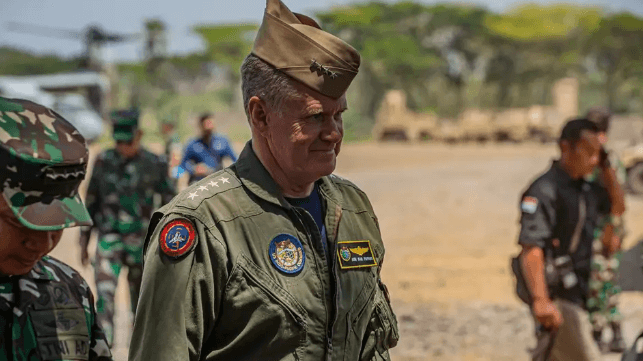U.S. and Chinese Military Leaders Meet to Defuse S. China Sea Tensions

On Monday, the head of U.S. Indo-Pacific Command held a remote meeting with the head of the People's Liberation Army Southern Theater Command. While a bilateral video call would be routine under most circumstances, it is the first time that the American and Chinese combatant commanders for the South China Sea have ever held direct talks, and it marks an important step towards de-escalation of the tensions in the Spratly Islands.
The short conversation has been a long time coming. Last November, when U.S. President Joe Biden met with Chinese President Xi Jinping, the two leaders agreed to restart direct military-to-military communication in hopes of lowering the risk of a misunderstanding at sea. The plan called for talks between Adm. Sam Paparo, head of Indo-Pacific Command, and PLA Southern Theater commander Gen. Wu Yanan. That conversation took 10 months to materialize, and during the intervening time period, there were more than a few developments in regional maritime security. Chinese forces have repeatedly blocked or harassed America's Philippine allies within the Philippine exclusive economic zone, injuring multiple Philippine servicemembers in violent encounters at Second Thomas Shoal. In recent weeks, the number of Chinese vessels in the Philippine EEZ has grown to more than 200 ships, including 180 vessels of the PLA's maritime militia.
In a readout, Indo-Pacific Command said that Paparo encouraged Gen. Wu to reconsider the PLA's "dangerous, coercive and potentially escalatory tactics" and to comply with international laws. The China Coast Guard routinely violates the Collision Regulations by ramming Philippine vessels, and China's claims in the Philippine exclusive economic zone violate the International Convention on the Law of the Sea (UNCLOS), according to the Permanent Court of Arbitration in the Hague.
On the same day, in an unusual development, U.S. and Chinese troops trained side-by-side in an exercise organized by the Brazilian military. Though it was held thousands of miles from the South China Sea, the event was highly symbolic: it is the first time in eight years that any American and Chinese forces carried out joint maneuvers.
Malaysia faces Chinese pressure
The government of Malaysia is also under pressure from Beijing over maritime rights in the South China Sea. A newly-leaked diplomatic cable from the Chinese foreign ministry shows that China has been pressuring Malaysia to halt oil and gas exploration near Luconia Shoals, off Sarawak. The region is covered by China's controversial "nine-dash line" (recently expanded to 10 dashes). The cable was obtained by the Philippine Daily Inquirer and published, and Malaysia has called for a police investigation into the release of confidential diplomatic information.

that matters most
Get the latest maritime news delivered to your inbox daily.
“The ministry views the leak of this document, which constitutes an official communication channel between the two countries, with grave concern,” said Malaysia's foreign affairs ministry in a statement.
Malaysia's maritime forces have recently begun shadowing Chinese vessels that enter Malaysian waters to operate near E&P activity. Near Ardasier Bank, an atoll off Kota Kinabalu, the Malaysian patrol vessel KD Sundang has been closely following the Chinese survey vessel Ke Xue San Hao. The Chinese vessel is suspected of carrying out unauthorized surveys in Malaysian waters, a common activity pattern for Chinese research vessels.
